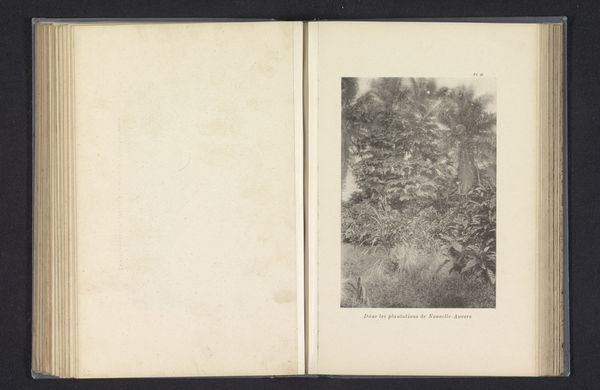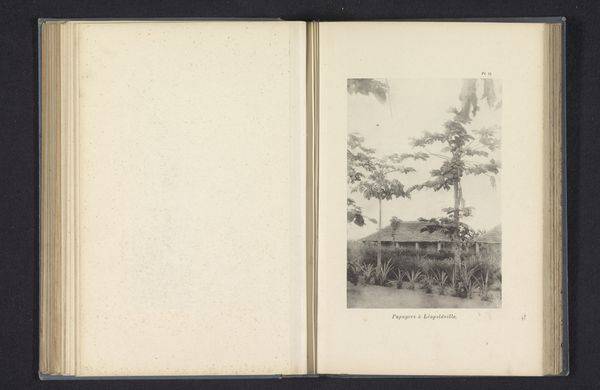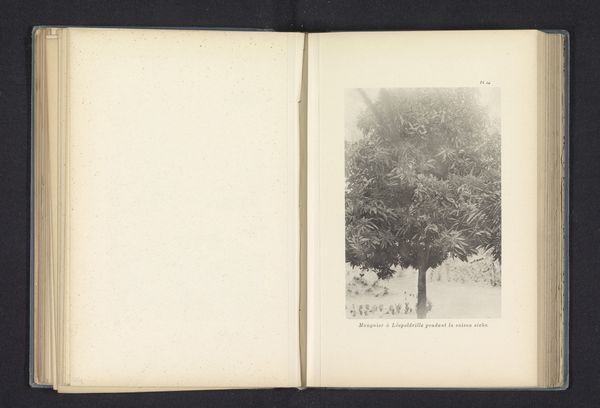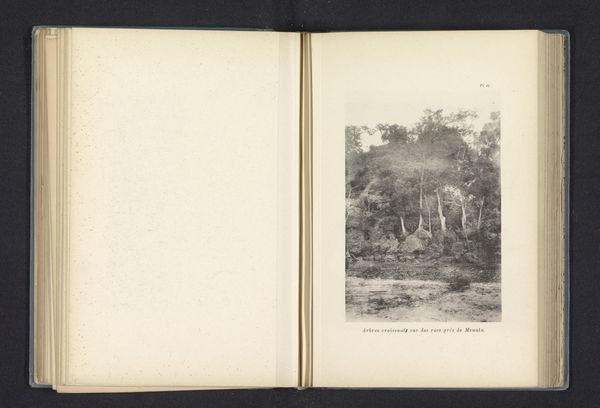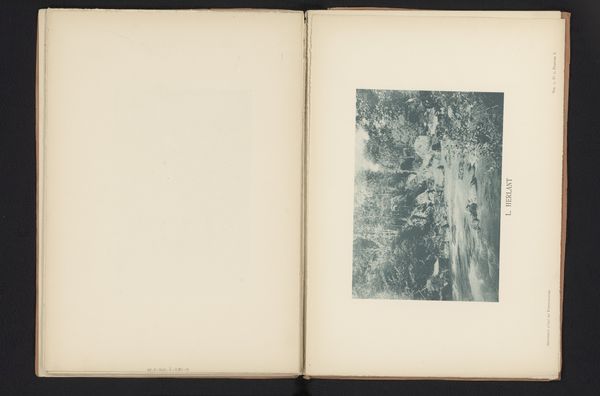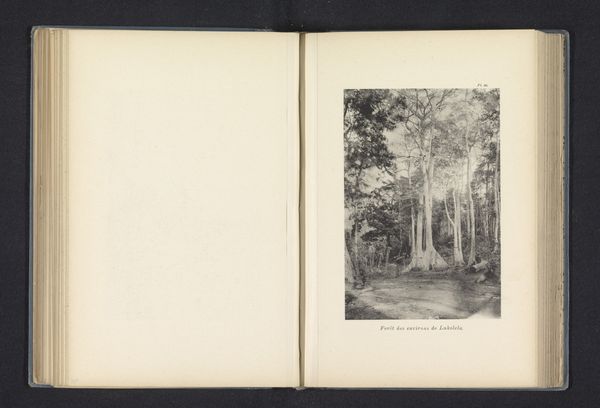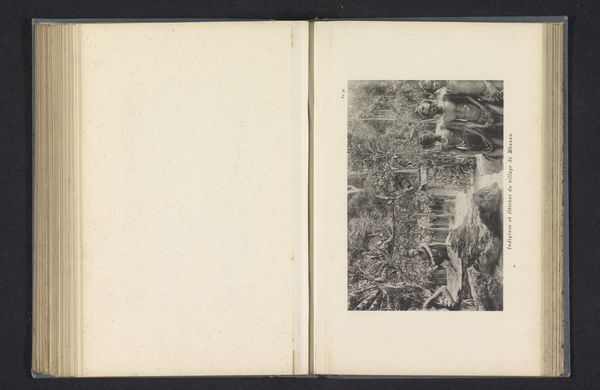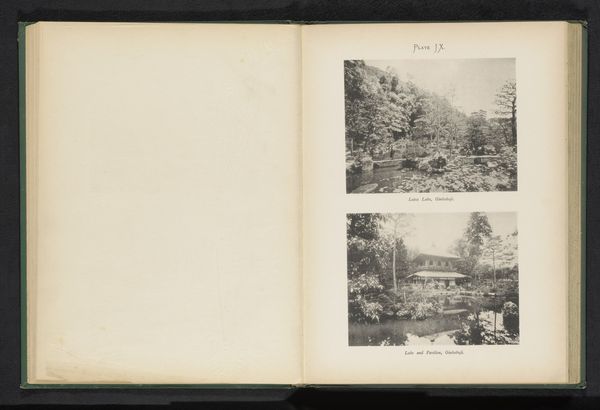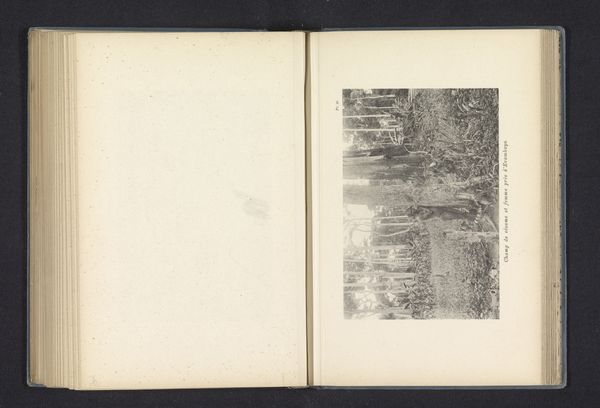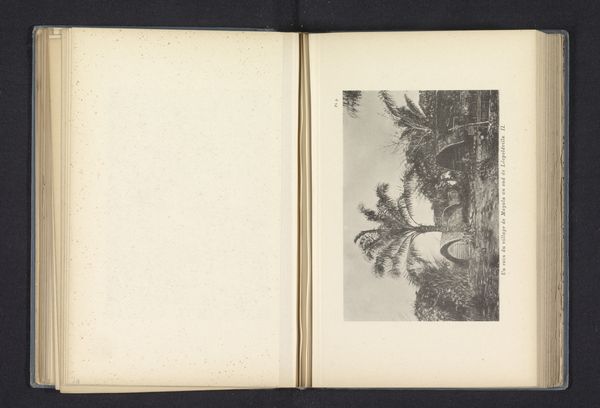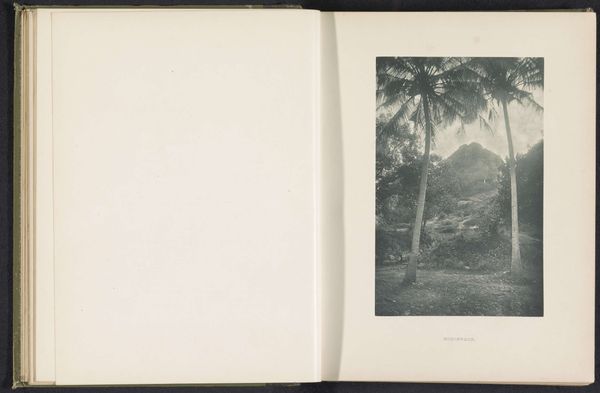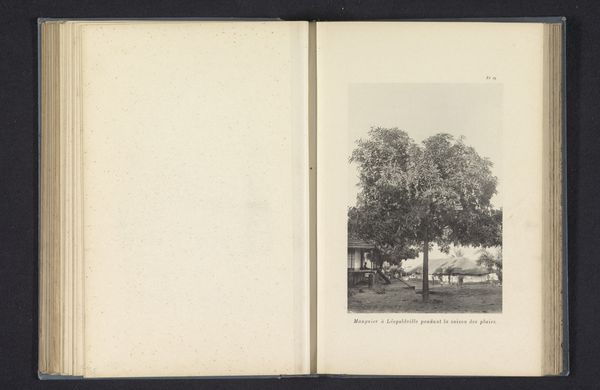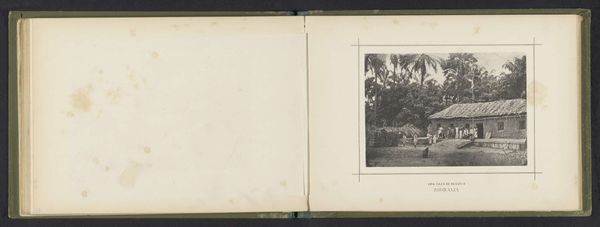
photography, albumen-print
#
paper non-digital material
#
landscape
#
photography
#
orientalism
#
naturalism
#
albumen-print
Dimensions: height 162 mm, width 109 mm
Copyright: Rijks Museum: Open Domain
Curator: Here we have an albumen print from 1896 by Franz Thonner titled "Mangoboom op een plantage te Equateurville," which translates to Mango Tree on a Plantation in Equateurville. Editor: My first thought is the way the light filters through the trees creates such a textured grayscale across the print. There's a palpable sense of stillness. Curator: Indeed. Thonner's work often presents us with an intriguing case study in colonial-era botanical exploration. As an explorer and botanist, he extensively cataloged plant species. This print exists as part of a broader effort to classify and showcase equatorial flora, knowledge that often served colonial interests. Editor: It is tempting to look closely at how the repetition and density of the leaves, together with the slight blur of motion, add complexity to the flat picture plane of this seemingly straightforward depiction. But this tension seems symptomatic of the history you suggest, as in the tension between an aesthetic and a purely utilitarian categorization of knowledge. Curator: Precisely! And the formal elements subtly reinforce that dynamic. Thonner, in documenting these landscapes and species, inadvertently participated in the construction of a visual language of colonial power. His detailed imagery served to familiarize and, in turn, assert a sense of dominion over the region's natural resources. Editor: Looking at the foreground again, I note how the composition invites a deeper viewing: a play of positive and negative space achieved by contrasting elements, which draws the viewer in. Curator: Consider how these photographs would have been circulated and consumed back in Europe. They offered a glimpse into faraway lands, shaping perceptions of these territories as resource-rich and ripe for exploitation. Editor: The image achieves balance despite the density of its components. Thinking of how it was perceived as a landscape "back then" makes me more interested in the trees in it, rather than in this work’s significance for thinking about natural history. Curator: Viewing the image from this perspective makes its colonial context very real for me. The act of representing that is now part of our understanding of its meaning and history. Editor: For me too. Seeing it in this fresh way helps me to move beyond familiar critical patterns and to appreciate its deeper compositional elements.
Comments
No comments
Be the first to comment and join the conversation on the ultimate creative platform.
